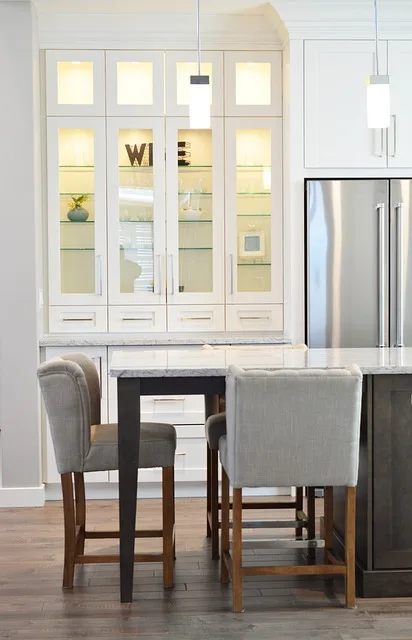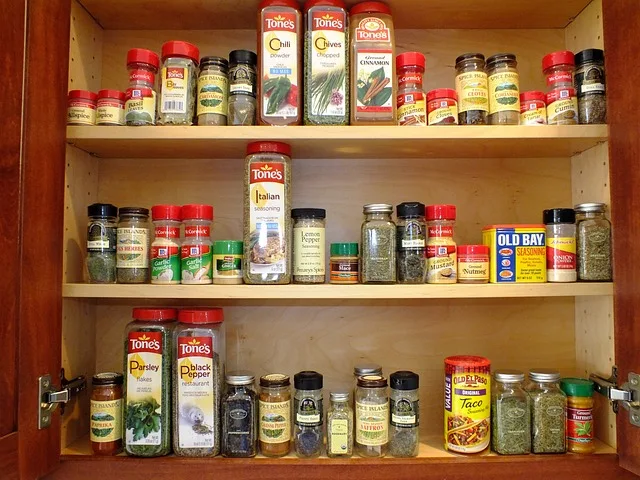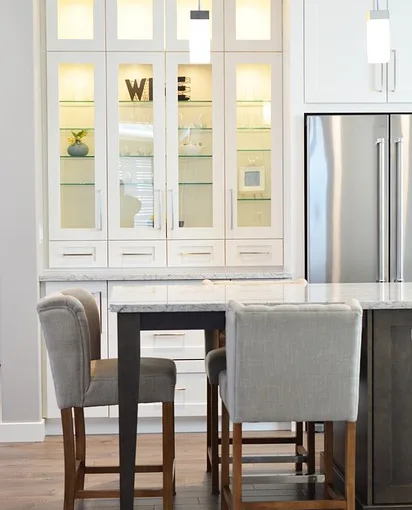
So, how does it work? First off, you’ll want to assess the current finish on your cabinets. If they’re made of solid wood and the finish is worn or faded, you’re in luck! You can sand them down to remove the old stain and then apply a new one. It’s like peeling away the layers of an onion to reveal something fresh and vibrant underneath. Just remember, if your cabinets are painted or have a laminate finish, restaining might not be the best option.

Now, let’s talk about the process. Start by removing the cabinet doors and hardware—this is like taking off your shoes before entering a clean house. Next, give them a good sanding to create a smooth surface for the new stain to adhere to. Once you’ve prepped them, it’s time to choose your stain. Do you want a rich mahogany or a light oak? The choice is yours, and it can dramatically change the vibe of your kitchen.
After applying the stain, let it dry completely before sealing it with a protective finish. This step is crucial; it’s like putting on sunscreen before heading out to the beach. You want your newly stained cabinets to shine and last for years to come. So, roll up your sleeves and get ready to transform your kitchen with a little elbow grease and creativity!
Revive Your Kitchen: The Art of Restaining Cabinets for a Fresh Look
First off, let’s talk about the magic of color. Choosing the right stain can completely change the vibe of your kitchen. Whether you’re dreaming of a rich walnut or a sleek ebony, the right hue can add warmth and depth, making your kitchen feel cozy and inviting. It’s like dressing your cabinets in a brand-new outfit that reflects your personal style!
Now, you might be wondering, “Isn’t this a complicated process?” Not at all! Restaining cabinets is surprisingly straightforward. Start by giving them a good clean to remove any grease or grime—think of it as prepping a canvas before painting. Then, sand down the old finish to create a smooth surface. It’s like giving your cabinets a little spa day! Once they’re prepped, apply the stain with a brush or cloth, and watch as the wood grain comes to life.
And here’s a pro tip: don’t rush! Allow the stain to dry completely before applying a protective topcoat. This step is crucial; it’s like putting on a sealant to keep your cabinets looking fabulous for years to come. Plus, you’ll feel a sense of accomplishment every time you walk into your kitchen, knowing you’ve transformed it with your own hands. So, roll up those sleeves and get ready to revive your kitchen!
From Drab to Fab: How Restaining Kitchen Cabinets Can Transform Your Space
Think of your cabinets as the canvas of your kitchen. When you restain them, you’re essentially painting a new story. You can choose rich, dark stains for a cozy, rustic vibe or go for a lighter shade to brighten things up. It’s like choosing the perfect outfit for a special occasion—your cabinets deserve that kind of attention too! Plus, it’s a budget-friendly way to revamp your kitchen without the hassle of a full remodel.
Now, you might be wondering, “Is it really that easy?” Absolutely! With a little elbow grease and some basic supplies, you can transform your cabinets from drab to fab in no time. Start by cleaning them thoroughly, then sand down the old finish. Once you’ve prepped the surface, it’s time to apply that beautiful stain. Watching the color seep into the wood is like watching a caterpillar turn into a butterfly—truly magical!
Restaining Kitchen Cabinets: A Cost-Effective Solution for a Modern Makeover
Imagine walking into your kitchen and feeling like you’ve stepped into a brand-new space. Restaining is like giving your cabinets a spa day; it rejuvenates their appearance and enhances the wood’s natural beauty. Instead of ripping out those old cabinets, why not embrace their potential? With a little elbow grease and some creativity, you can transform them from drab to fab.

Now, you might be wondering, “Is it really that easy?” Absolutely! Restaining is a DIY project that many homeowners can tackle. Start by removing the cabinet doors and hardware, then give them a good clean. Sanding is your next step—think of it as exfoliating your cabinets. This process helps the new stain adhere better and ensures a smooth finish.
Choosing the right stain is crucial. Whether you’re after a rich walnut or a sleek gray, the options are endless. It’s like picking the perfect outfit for a night out; you want something that reflects your style and makes you feel good. Once you’ve applied the stain, let it dry, and then seal the deal with a protective topcoat.
DIY or Hire a Pro? The Best Approaches to Restaining Your Kitchen Cabinets
Let’s start with the DIY route. If you’re the crafty type who loves a good project, restaining your cabinets can be a fun way to express your creativity. Picture this: you, a paintbrush in hand, transforming your kitchen into a vibrant space that reflects your personality. Plus, you’ll save a chunk of change by skipping the labor costs. Just make sure you’ve got the right tools and materials—think sandpaper, stain, and a good sealer. And don’t forget to prep! Cleaning and sanding your cabinets is like laying the foundation for a house; it’s crucial for a smooth finish.
On the flip side, hiring a professional can be a game-changer if you’re short on time or feel a bit overwhelmed. Imagine coming home to a beautifully restained kitchen without lifting a finger. Pros have the experience and know-how to get the job done efficiently, often with stunning results that can elevate your home’s value. They also know the ins and outs of different stains and finishes, ensuring you get the look you want without the guesswork.
So, what’s it going to be? Are you ready to dive into a DIY adventure, or would you rather sit back and let the experts handle it? The choice is yours, and either way, your kitchen is in for a fabulous makeover!
Frequently Asked Questions
Is Restaining Kitchen Cabinets a DIY Project?
Restaining kitchen cabinets can be a DIY project if you have basic woodworking skills and the right tools. It involves cleaning, sanding, applying stain, and sealing the cabinets. However, it requires attention to detail and patience to achieve a professional finish. Consider your experience level and the condition of the cabinets before deciding.
What Type of Stain Should I Use for Kitchen Cabinets?
When choosing a stain for kitchen cabinets, consider the wood type and desired finish. Oil-based stains provide a rich color and durability, while water-based stains offer quick drying and low odor. For a natural look, opt for a clear or light stain that enhances the wood grain. Test samples to ensure the stain complements your kitchen’s color scheme.
Can I Restain My Kitchen Cabinets Instead of Painting Them?
Restaining kitchen cabinets is a viable option if you want to refresh their appearance without the full coverage of paint. This process involves sanding the existing finish, applying a new stain, and sealing it for protection. It can enhance the natural wood grain and provide a rich, updated look while maintaining the original material. Ensure the wood is in good condition for the best results.
How Long Does Restaining Kitchen Cabinets Take?
The time required to restain kitchen cabinets typically ranges from a few hours to several days, depending on the number of cabinets, the complexity of the job, and the drying time of the stain. Preparation, including cleaning and sanding, can add additional time. Allow for at least 24 hours for the stain to dry before applying a topcoat for optimal results.
How Do I Prepare Kitchen Cabinets for Restaining?
To prepare kitchen cabinets for restaining, start by removing all hardware and doors. Clean the surfaces thoroughly with a degreaser to eliminate grease and dirt. Sand the cabinets to remove the old finish and create a smooth surface for the new stain. Wipe down the surfaces with a damp cloth to remove dust. Finally, ensure the area is well-ventilated and ready for the application of the new stain.
